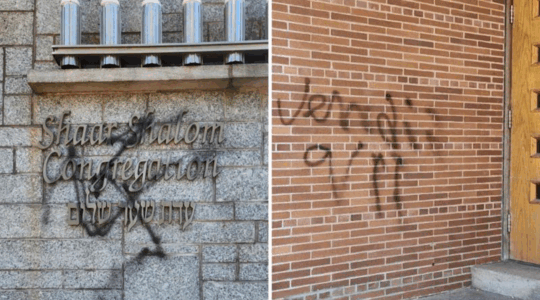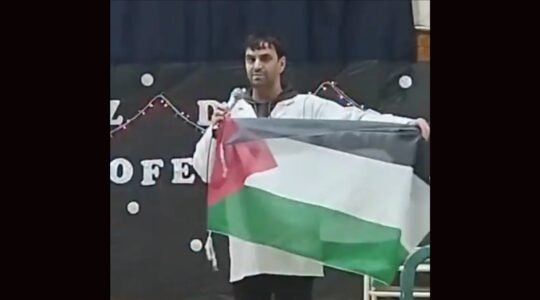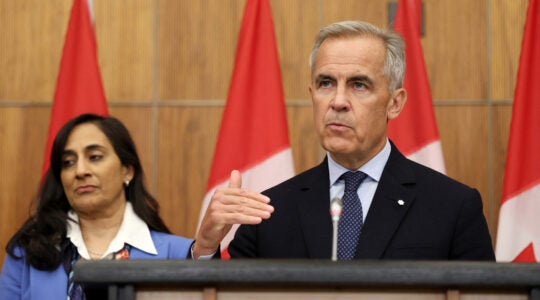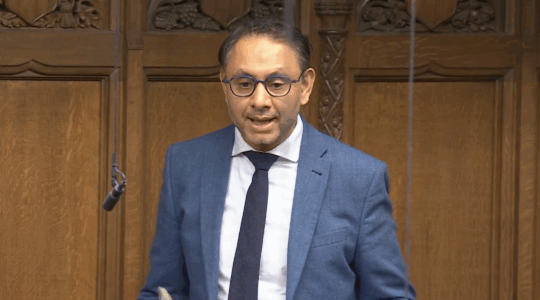LVOV, Ukraine (JTA) – Dr. Aleksander Schwarz stands outside the locked gates of what once was the infamous Janowska forced labor camp, on the outskirts of this largest city in western Ukraine.
Schwarz kicks a stone awkwardly with one foot and looks up at the rooftops of the ruined barracks inside the wall still topped with barbed wire.
Today those gates keep him out. More than 60 years ago, they kept him locked in.
“I built those barracks with my father,” he says softly. “I was just a boy.”
Now 83, Schwarz is a retired cybernetics scientist living in Munich, Germany. But as a teenager he spent two hellish years in Janowska, the largest death camp in Ukraine. Between 1941 and 1943, more than 200,000 Jews were murdered there, approximately one-third of Ukrainian Jewry.
His father was shot before his eyes. Schwarz jumped naked into a pit to escape execution.
He starved and shivered, eating grass to stay alive. He shared a tent with the young Simon Wiesenthal, part of a work brigade forced to bury the corpses of tens of thousands of Jews machine-gunned to death in a ravine called the Valley of Death.
“We buried them in those hills,” Schwarz says, pointing a shaking finger to a nearby mound now dotted with wooden houses. “The Ukrainians built beautiful homes on our bones.”
Schwarz never forgot the horrors and in 1992, soon after Ukrainian independence, he came back to his native city to take care of its Jews.
Today the man who believes he is the last living survivor of the Janowska camp devotes his life to feeding, clothing and providing medical care to thousands of Jews in the Lvov region, working through the Munich B’nai B’rith lodge of which he is an active member.
He raises 250,000 euros a year from Jews and non-Jewish supporters in Europe, and he makes several trips a year to Lvov to ensure the money is spent properly.
His efforts, along with those of his friend and fellow lodge member Joseph Domberger, a native of the Lvov region and one of his major donors, enable 120 elderly Jews to eat a hot meal five days a week and 350 receive free medicine. Hundreds more get dental care, have their laundry done and their shoes repaired. Sixty children go to a Jewish kindergarten.
In total, 1,200 needy Jews in Lvov – about half the city’s Jewish population – have a better life because Aleksander Schwarz did not forget them.
Schwarz has been honored both by B’nai Brith International and the German government, and his story is recorded at Yad Vashem, Jerusalem’s Holocaust museum and research center.
“I don’t know how Jewish life in Lvov would survive without people like him,” says Danny Gechtman, the American Jewish Joint Distribution Committee representative for Kiev and western Ukraine.
Before World War II, Lvov’s 150,000 Jews comprised one of the most vibrant, sophisticated Jewish communities in Eastern Europe. But when the Nazis marched into town in late June 1941, the killing began. Two days of pogroms left 2,500 Jews dead, most killed by their neighbors.
“I was a small boy, but I remember the streets running with blood,” Schwarz relates.
Schwarz and his father were rounded up with the first group of Jewish men and forced to build the Janowska camp. Then they were taken to the Jewish cemetery and ordered to break up the tombstones to pave roads. They hacked ice from frozen ponds to chill their guards’ beer.
When his father, a sickly man of 42, was shot in front of him after returning from a work detail, Schwarz was barely 15.
His chance to escape came in July 1943.
Schwarz and three other boys were in a work brigade that marched every day from the camp to the railway station to cut up old railway cars into metal for the German war effort. The railway station was a selection center for Jews arriving from all over Ukraine.
“Ninety percent went to the left, to Majdanek and Belzec,” he says, naming two death camps. “The other 10 percent were sent to Janowska.”
One day he and his friends were carrying two heavy oxygen tanks, guarded by a lone SS guard. As they rounded a corner, they threw the tanks at the guard, overpowered him, and Schwarz and another boy strangled him with their bare hands.
Schwarz donned the guard’s uniform, shouldered the dead man’s gun and, in an incredible show of audacity, marched out of the station with his friends as if he were escorting three Jewish prisoners.
Eventually the young men reached the Carpathians, where they formed a partisan brigade of about 150 men and women that skirmished repeatedly with the pro-German Ukrainian Rebel Army headed by Stefan Bandera. The women would stay in underground bunkers while the men fought.
While he and his comrades were out fighting, Schwarz recalls, Bandera’s men discovered the bunker, threw a grenade inside and killed all the women.
Schwarz stayed in the forest until Ukraine was liberated by Soviet troops in late 1944. He had tuberculosis and was sent to a sanitorium in Poland. He remained in that country, marrying and earning his doctorate in cybernetics, until 1968 when he and his family fled to Germany to escape Poland’s growing anti-Semitism.
In 1992 he made his first trip back to what was now independent Ukraine. In Lvov he was shocked to see so many poor, needy Jews, many of them Holocaust survivors like himself. Most were immigrants from the east – only several hundred of Lvov’s prewar Jewish population survived the Nazi occupation.
Energized, Schwarz began raising money for Lvov all over Europe. First he set up a food program, then the free medical clinic, the children’s project and a Holocaust education center.
All the work, from picking up and washing clients’ laundry to doling out the hot meals in the soup kitchen, is done on a volunteer basis by the 63 members of Lvov’s newly revived B’nai B’rith lodge, most of them elderly retirees themselves. There is no overhead, say members of the Lvov lodge.
Schwarz has one dream left: building a monument to the Jews killed in Janowska.
Unfortunately, he says, bureaucratic obstacles have stalled the project for 15 years.
Meanwhile, he quietly put up a granite marker at the entrance to the Valley of Death, but it is regularly defaced. On this trip, as Schwarz stops by to say Kaddish, the inscription honoring the Holocaust victims is obscured by white paint thrown by vandals.
“This is the only place in the world where Jews were killed and there’s no monument,” he says.
It’s not just to honor the dead but to remind the living of what happened in their town. Even today, 15 years after independence, very few locals know this history.
As Lvov expanded over the years the Janowska camp, used as a prison since Soviet times, has become absorbed into the city limits. People walk outside its walls without knowing what it once was.
“I was born here, and I didn’t know anything about this,” murmurs Tatiana Kotova, a young Jewish translator working with Schwarz’s entourage, as she gazes out upon the Valley of Death.
“I’m 83,” Schwarz repeats. “If my generation doesn’t do this, no one will.”
(For information on the B’nai B’rith Lvov welfare project, contact leopolis@dpi.de.)
JTA has documented Jewish history in real-time for over a century. Keep our journalism strong by joining us in supporting independent, award-winning reporting.





